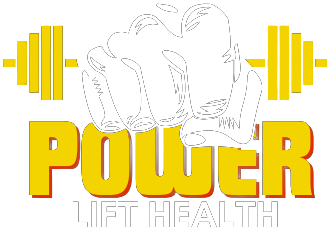In the quest for optimal fitness, the focus often lands squarely on the intensity and structure of the workout itself.
However, as Dr. Andy Galpin and Dr. Andrew Huberman emphasize, the period immediately following exercise is crucial for both improvement and recovery.
This pivotal time frame, if managed correctly, can significantly enhance the benefits of your workout routine.
Dr. Galpin and Dr. Huberman shed light on the importance of initiating the recovery process right after a workout.
They suggest that a rapid transition from the stress of exercise to a state of recovery is essential for adaptation and improvement. According to their insights, failing to swiftly reduce stress levels post-exercise can impede the signaling necessary for maximizing workout results.
One of the simplest yet effective strategies they recommend is listening to slow-paced music immediately after exercising. Contrary to the high-energy tunes that might fuel your workout, slower music can aid in kickstarting the recovery process by calming the nervous system.
Another cornerstone of their recovery protocol is focused breathing techniques, which can be performed in various positions, though lying on one’s back is highlighted as particularly effective.

The practice of box breathing, where inhalation, holding of the breath, exhalation, and another hold are each done for an equal duration, is a favored method. This technique not only fosters relaxation but can also significantly reduce stress levels if done for periods ranging from three to ten minutes post-workout.
Highlighting the power of breathing in stress management and recovery, Dr. Huberman references a study from his lab indicating that techniques like box breathing and cyclic sighing lead to notable decreases in resting heart rate and improvements in markers such as heart rate variability.
These outcomes underscore the effectiveness of controlled breathing in facilitating the body’s return to a state of equilibrium after the heightened stress of physical exertion.
In essence, Dr. Galpin and Dr. Huberman propose a holistic approach to workout recovery, emphasizing the integration of simple yet potent practices like slow-paced music and structured breathing techniques. These methods not only enhance the immediate recovery process but also contribute to long-term health and performance benefits. By adopting these strategies, individuals can optimize their recovery, ensuring that each workout contributes maximally to their overall fitness and well-being.
Why is Workout Recovery Important?
Workout recovery is a crucial component of any fitness regimen for several reasons, contributing significantly to health, performance, and progress.
Here are the key reasons why workout recovery is so important:
Muscle Repair and Growth: During exercise, especially strength training, small tears occur in muscle fibers. The recovery period allows these fibers to repair and grow stronger. Without adequate rest, muscles cannot fully repair, which can hinder strength and muscle growth.
Prevention of Injury: Continuous training without proper rest can lead to overuse injuries. Recovery periods help prevent these injuries by allowing the body time to heal and strengthen before being subjected to additional stress.
Restoration of Energy Stores: Exercise depletes energy stores in the muscles, such as glycogen. Recovery allows the body to replenish these stores, ensuring that you have enough energy for your next workout session.
Avoidance of Overtraining Syndrome: Overtraining syndrome occurs when there’s an imbalance between training and recovery. Symptoms include prolonged fatigue, decreased performance, and increased risk of injury. Proper recovery helps avoid this condition, keeping you on track towards your fitness goals.
Improved Performance: Adequate recovery contributes to improved performance over time. When the body is allowed to recover fully, it can adapt to the stresses of training, leading to improvements in strength, endurance, and overall athletic ability.
Psychological Benefits: Recovery time also offers mental and emotional benefits. It allows for a psychological break from the rigors of intense training, reducing the risk of burnout and maintaining motivation and enjoyment in your training program.
Optimization of Physiological Processes: Recovery activities, such as sleep and specific nutrition strategies, support physiological processes that contribute to improved health and fitness.
 Source: Photo courtesy of CrossFit Inc
Source: Photo courtesy of CrossFit IncFor example, sleep is critical for hormonal balance, including the regulation of growth hormone and cortisol, which are essential for muscle repair and stress management, respectively.
In summary, workout recovery is not merely a break from training but an integral part of a well-rounded fitness program. It supports the body’s ability to perform, adapt, and improve over time while minimizing the risk of injury and burnout. Incorporating adequate rest, proper nutrition, hydration, and stress management techniques into your recovery strategy can significantly enhance your overall fitness and well-being.
Source link: https://www.boxrox.com/how-to-maximize-workout-recovery-insights-from-dr-andy-galpin-dr-andrew-huberman/ by Robbie Wild Hudson at www.boxrox.com








